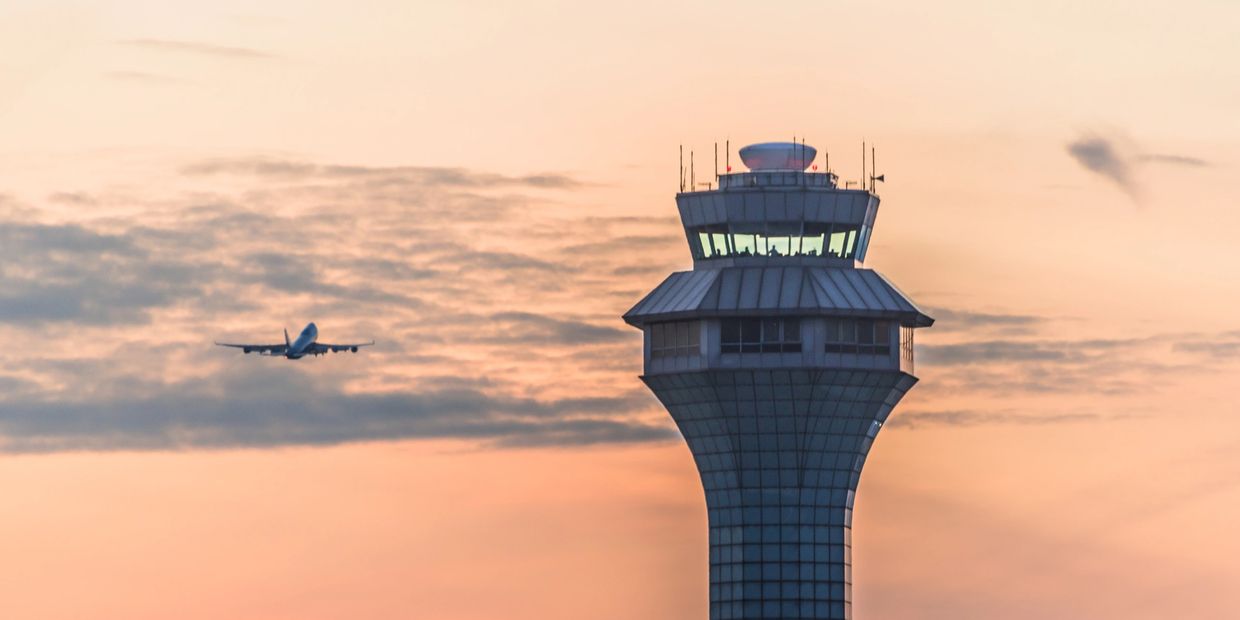
Ai driven Air Traffic Management
The aviation industry is undergoing a dramatic transformation, thanks to the integration of artificial intelligence (AI) into air traffic management (ATM). AI-driven systems are enhancing operational efficiency, reducing congestion, improving flight safety, and helping to achieve sustainability goals. Recent advancements, combined with rising demand for air travel, are pushing the boundaries of what is possible in managing global airspace. As the skies grow busier, AI is playing a pivotal role in ensuring that future air traffic can be managed safely and efficiently.
Optimizing Air Traffic Flow: AI's Role in Managing Complexity
One of the most pressing challenges in modern air traffic management is handling the increasing volume of flights, especially in crowded airspace hubs. AI systems use machine learning algorithms to analyze massive datasets in real time, identifying optimal flight paths, adjusting routes to avoid congestion, and predicting delays caused by weather or mechanical issues. By continuously monitoring these variables, AI can dynamically re-sequence aircraft departures and arrivals, allowing for smoother operations and minimizing costly delays.
For example, the implementation of AI systems by EUROCONTROL, the organization managing European air traffic, has demonstrated how predictive analytics can improve traffic flow, reducing flight delays and enhancing overall operational efficiency. These systems enable air traffic controllers to anticipate traffic spikes and adjust scheduling accordingly, leading to improved airspace utilization and a more seamless travel experience for passengers.
The Rise of Remote and Digital Towers
Another groundbreaking development in ATM is the rise of remote and digital air traffic control towers. AI-driven towers equipped with high-resolution cameras, sensors, and machine learning algorithms are replacing traditional physical control towers at many airports. These digital towers provide air traffic controllers with enhanced situational awareness, including panoramic views and augmented reality overlays that display critical flight data in real time.
For smaller or remote airports, this technology is a game-changer, as it enables centralized control from a remote location, reducing costs while maintaining or even enhancing safety standards. Airports in Sweden and the UK are already adopting remote towers, which promise to revolutionize how air traffic is managed at facilities that previously lacked the resources for comprehensive ATC infrastructure.
Improving Flight Safety Through Predictive Analytics
Flight safety remains a top priority in ATM, and AI is proving invaluable in this area. Predictive analytics allows AI systems to detect potential safety issues before they become critical. By analyzing historical data on flight patterns, mechanical failures, and weather conditions, AI can predict when an aircraft might encounter problems, prompting proactive measures to mitigate risks.
Additionally, AI-powered surveillance systems can identify anomalies in aircraft behavior, such as deviations from approved flight paths or unexpected altitude changes, alerting controllers instantly. This real-time monitoring enhances the ability to prevent mid-air collisions and other critical incidents, ensuring safer skies for all passengers.
Minimizing Environmental Impact: AI for Sustainable Aviation
AI's contribution to sustainable aviation is significant. By optimizing flight routes and altitudes to minimize fuel consumption, AI systems are helping to reduce the carbon footprint of air travel. Continuous descent approaches (CDA), where aircraft descend smoothly rather than in a series of steps, are being fine-tuned by AI to save fuel and cut emissions.
Moreover, AI-driven ATM systems facilitate more efficient ground operations, including taxiing, which further reduces fuel usage. These advancements are crucial as the aviation industry strives to meet stringent international emissions targets set by organizations such as the International Civil Aviation Organization (ICAO).
Streamlining Airport Operations with AI
Beyond air traffic control, AI is revolutionizing airport operations by enhancing ground traffic management and gate assignments. Airports are deploying AI to optimize the movement of ground vehicles, ensuring that baggage handling, refueling, and catering services are synchronized with aircraft arrivals and departures.
AI algorithms also predict gate availability and potential delays, allowing airport operators to make data-driven decisions that minimize passenger wait times and improve the overall airport experience. These improvements not only enhance efficiency but also contribute to higher passenger satisfaction.
Future Prospects: Expanding AI Integration in Aviation
The future of AI-driven ATM is bright, with further advancements in autonomous aircraft management on the horizon. Researchers are exploring the potential for AI to manage unmanned aerial vehicles (UAVs) and drones within the same airspace as commercial flights, creating a unified air traffic management system that can accommodate both manned and unmanned aircraft.
As AI technology continues to evolve, the integration of blockchain for secure data sharing and quantum computing for faster decision-making could further enhance the capabilities of ATM systems. These innovations will be critical as global air traffic continues to grow, requiring even more sophisticated management solutions.
Conclusion
AI-driven air traffic management represents a transformative shift in the aviation industry, offering unprecedented improvements in efficiency, safety, and sustainability. As these systems become more advanced, they will redefine how airspace is managed, ensuring that the skies remain safe and accessible for future generations of travelers. The continued collaboration between aviation authorities, AI developers, and airlines will be essential to fully realize the potential of this cutting-edge technology.
Subscribe
This website uses cookies.
We use cookies to analyze website traffic and optimize your website experience. By accepting our use of cookies, your data will be aggregated with all other user data.